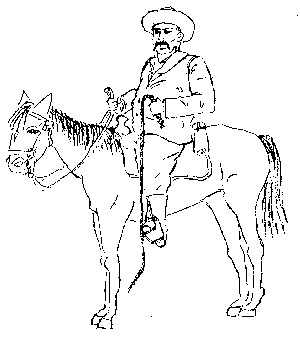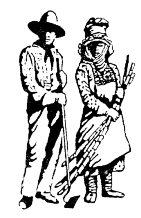|
In ancient Hawaiʻi the maka‘āinana or common people worked the land, farming its rich harvest and that of the abundant ocean. Subject only to the will of their chiefs, the people worked primarily for themselves. Sometimes they were assessed an ‘auhau hana, or labor tax, in the form of temporary service or duty the ali‘i might command such as the building of a heiau or royal preserve; otherwise, they were on their own. With the arrival of Western traders and businessmen, native Hawaiian resources like kapa bark cloth and the highly prized and fragrant ‘iliahi, sandalwood, soon became the currency supporting a new island economy. By 1827, though, the reigning monarch, King Kamehameha III was faced with a burgeoning trade deficit and many personal debts. To meet this crisis he was forced to decree that every man would be assessed a picul of sandalwood and every woman, not infirm or decrepit, a 12 feet by six feet kapa mat. At his command loyal maka‘āinana laboriously depleted the aged sandalwood forests to such an extent that this slow-growing tree was nearly eradicated. As the sandalwood trade exhausted, it was soon replaced by the demands of the whaling industry. Sailors wanted fresh vegetables, sturdy kapa for ship repair, and young, able-bodied men to fill out their crews. While many of the fittest of the native Hawaiians were pressed into such service, vast numbers of the remaining population fell prey to the scourge of the white-man's diseases for which they had no resistance. Venereal disease, tuberculosis and even measles, which to the haole was no more than a mild childhood illness, raged like biblical plagues decimating then re-decimating the Hawaiian people just as the treasured ‘iliahi had been cut down earlier. Where it is estimated that in the days of Captain Cook the population stood at about 300,000, by the middle of the nineteenth century only about one fourth of that number were left. Like the sandalwood trade the whaling industry swiftly came to an end. In 1859 oil was discovered in Pennsylvania, and within a few years this new type of oil replaced whale oil in lamps. But by then, the seeds of Hawai‘i's next great industry had already been twenty years in cultivation, when Hawai‘i's first sugar plantation opened at Kōloa on Kaua‘i. The rapidly evolving Hawaiian way of life was drastically changed again in 1848. The dividing up the land known as "The Great Mahele " in that year introduced and institutionalized the private ownership or leasing of land tracts. Within a few years the sugar agricultural interests, mostly haole, had obtained leases or outright possession of a major portion of the best cane land. In fact it was not long after that first
plantation opened that the first recorded Hawaiian
labor dispute occurred when the native Hawaiian
workers, who were being paid in scrip instead of cash, walked off their jobs at Kōloa in 1841 to get a
wage increase. Unsuccessful as it was, this strike, together with
the ever diminishing labor supply of native workers,
seemed to convince the growers only of the need to
look to fresh sources of labor outside the islands.
Alexander & Baldwin, Ltd., American Factors Ltd., Castle & Cooke, Ltd., C. Brewer & Company, Ltd., and Theo. H. Davies Company, Ltd., before long constituted a power in the islands that controlled virtually all business and commercial as well as public employment opportunities. 
Prior to annexation in 1898, most of the immigrant plantation workers were bound by labor contracts that resembled military enlistment papers. The worker voluntarily "bound" himself to his employer for a number of years under the labor regulations of the Masters & Servants Act. Under this law, for example, absenteeism or refusal to work could cause a contract laborer to be apprehended and sentenced by the district magistrate or police office to work for the employer an extra amount of time after the contract expired, usually double the time of the absence. But the most resentment was often caused by the cruelty and arrogance of the plantation overseer or luna as he was called. When Hawai‘i became a territorial part of the United States, Caucasians from the mainland began to pour into the islands where many sought and found work in the skilled trades and crafts. Their influence tempted many of the native and imported workers to apprentice themselves to the skilled trades and leave the plantation and the luna's whip for the town areas and higher paying jobs.
Two years after Hawai‘i became a Territory the daily wage for field hands was up to about seventy cents. Wage improvement was generally the result of a series of sporadic strikes organized along racial lines. Though these strikes often failed to achieve the official bargaining status the workers hoped for, in almost every case, they were followed by increased wages and benefits to the workers or the discharge of particular luna that the employers hoped would prevent further unionization. Then, in 1935, President Roosevelt, as part of his New Deal legislation, passed the Wagner Act giving workers the legal right to organize unions that could demand employer recognition. The International Longshoremen and Warehouseman's Union, the ILWU, unified the former Japanese and Filipino racial unions into Hawai‘i's biggest single union representing sugar, pineapple and longshore workers across the island chain. But the grip of the Big Five control over Hawai‘i would continue until the fifties. By the late forties labor had achieved a considerable degree of solidarity forged in a number of key strikes that aimed to establish the principle of wage parity in the islands. Employers had always paid local workers less than the standard wage paid to workers on the West Coast of the United States. The 1949 Longshore Strike that lasted six months and crippled the Territory's economy was the greatest single battle in that campaign. The employers and their spokesmen in the media seized upon the popular fears of the day and tried to portray the unionists as communists. And an anti-union organization called IMUA was formed to stir up the community against the strikers. Five years later not only had wage parity been achieved, but the political domination of the Big Five was ended and a newly elected Democratic majority commanded both houses of the territorial legislature. In 1959 Hawai‘i became the 50th State and jetliners began regular air service rapidly increasing the tourist industry and, with it, the retail sales sector and construction industry. In the fifties and sixties O‘ahu residents used to joke that the state bird must be the construction crane, so common a sight was it on the Honolulu skyline. Unionization in Hawai‘i reached its zenith in the early seventies with the passage of the state's collective bargaining law for public employees. Long the lowest paid and least secure workers whose employment and wages were generally at the mercy of political caprice, state and county workers now had the right to bargain contracts and file grievances like their brothers and sisters in the private sector. Though in general, wages and benefits paid to Hawai‘i's workers are still somewhat less than their mainland counterparts, the gap has grown smaller and smaller due in large part to the activity of organized labor. And today children of former plantation workers, many college educated, are seen everywhere in the middle-class professions thanks to the spirit of sacrifice and determination that united their parents' generation and made Hawai‘i one of the most socially progressive states in the nation.
Major Unions in Hawai'iHawaii Government Employees Association, HGEA/AFSCME, Local 152 members International Longshore & Warehouse Union, ILWU, Local 142 members United Public Workers, UPW/AFSCME, Local 646 Hawaii State Teachers Association, HSTA-NEA UNITE HERE, Local 5 International Brotherhood of Electrical Workers IBEW, Locals 1186, 1260, 1357 International Brotherhood of Teamsters, Locals 681, 996, 2707 International Brotherhood of Carpenters & Joiners, Hawai‘i Carpenters Union, Local 745 Hawaii Labor CouncilsBuilding & Construction Trades Council, 17 construction unions Honolulu Port Council, 13 waterfront unions Newspaper & Printing Trades Council, 4 guilds/unions Metal Trades Council, 13 unions under a single contract with the Navy for Pearl Harbor Shipyard workers. 1 The song "Pua Mana No" is from the collection The Echo of Our Song: Chants and Poems of the Hawaiians by Mary P. Pukui & Alfons L. Korn (Honolulu: University Press of Hawai‘i, 1973), pp. 122-24. |
||||||
 Immigrant laborers were sought from Asia
and the Pacific. Over the years in successive waves
of immigration, the sugar growers brought to Hawai'i
46,000 Chinese, 180,000 Japanese, 126,000 Filipinos as well as Portuguese and Puerto Ricans,
each one used generally to offset the bargaining power of its predecessor. Following the classic
formula, the planters increased the labor supply as needed to decrease labor's demands. The
major sugar planters grew more and more holdings into five big companies that eventually
dominated the island economy.
Immigrant laborers were sought from Asia
and the Pacific. Over the years in successive waves
of immigration, the sugar growers brought to Hawai'i
46,000 Chinese, 180,000 Japanese, 126,000 Filipinos as well as Portuguese and Puerto Ricans,
each one used generally to offset the bargaining power of its predecessor. Following the classic
formula, the planters increased the labor supply as needed to decrease labor's demands. The
major sugar planters grew more and more holdings into five big companies that eventually
dominated the island economy.